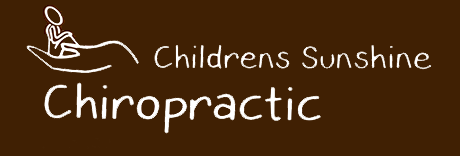Osgood-Schlatter is a common cause of knee pain in kids that are 9 – 14years olds. We see this condition particularly in those who are active in sports which involve running or jumping. This condition affects the area just below the knee, where the patellar tendon attaches to the shinbone (tibia). Osgood Schlatter can cause discomfort and may limit a child’s ability to participate in physical activities.

What is Osgood-Schlatter Disease?
Osgood-Schlatter disease occurs most commonly during growth spurts when bones, muscles, and tendons are developing rapidly. It primarily affects young athletes 9 -14 years of age. It is more common in those involved in sports that involve running, jumping, or quick changes in direction, such as soccer, basketball, or gymnastics.
The condition arises when repetitive stress is placed on the patellar tendon, which pulls on the growth plate at the top of the tibia. This can cause inflammation and sometimes lead to a bony lump forming at the site of irritation. While the condition is typically self-limiting and resolves once the child stops growing, it can cause significant knee pain and discomfort during activity. In some cases affected individuals may give up playing sports because of the pain.
Causes of Osgood-Schlatter Disease
Several factors contribute to the development of Osgood-Schlatter disease, including:
- Growth Spurts: During adolescence, rapid growth can place additional stress on muscles and tendons, making them more susceptible to overuse injuries.
- Repetitive Motion: Sports that involve repetitive running, jumping, or kneeling can strain the patellar tendon, leading to irritation and inflammation of the patella tendon and growth plate of the skin bone ( tibial ).
- Physical Activity: Young athletes who engage in sports that require sudden changes in direction or high-impact movements are more likely to develop Osgood-Schlatter disease.
- Tight Muscles: Tightness in the quadriceps can increase the tension on the patellar tendon, exacerbating the condition.
Symptoms of Osgood-Schlatter Disease
The most common symptom of Osgood-Schlatter disease is knee pain just below the kneecap. The pain typically worsens with physical activity, particularly running, jumping, or squatting. Other symptoms may include:
- Swelling: Mild to moderate swelling around the affected area.
- Tenderness: The area just below the knee may be tender to the touch.
- A Visible Lump: In some cases, a bony bump may develop where the patellar tendon attaches to the tibia.
- Reduced Range of Motion: Tightness in the muscles surrounding the knee may limit flexibility and mobility.
Symptoms can vary from mild discomfort to severe pain, and they often flare up during or after physical activity.
How is Osgood-Schlatter Disease Diagnosed?
Osgood-Schlatters can be diagnosed based on a physical examination and a review of the patient’s medical history. The healthcare provider, such as a chiropractor may assess the knee for tenderness, swelling, and mobility. In some cases, X-rays may be ordered to rule out other potential causes of knee pain and confirm the diagnosis.
Treatment Options for Osgood-Schlatter Disease
While Osgood-Schlatter disease typically resolves on its own once the child’s bones stop growing, managing the pain and reducing inflammation is essential for maintaining an active lifestyle. Chiropractic care can play a key role in helping young athletes manage Osgood-Schlatter disease and allowing them to continue playing sports.
Here are some treatment options:
- Rest and Activity Modification
- Resting the affected knee is crucial for reducing pain and inflammation. Your chiropractor may recommend limiting or modifying physical activity to prevent further irritation of the patellar tendon.
- Chiropractic Adjustments
- Chiropractic care can help align the musculoskeletal system and reduce the strain on the knee. Adjustments to the spine and pelvis can improve biomechanics and help the body function more efficiently.
- MLS Laser – MLS laser can be used on the tibia and knee muscles to help with muscle contraction, pain and inflammation.
- Stretching and Strengthening Exercises
- Your chiropractor may provide a series of stretching and strengthening exercises to target the muscles around the knee. Stretching the quadriceps and hamstrings can relieve tension on the patellar tendon, while strengthening the muscles can help support proper knee function.
- Cold Therapy
- Applying ice packs to the affected area can help reduce swelling and alleviate pain after physical activity.
- Supportive Bracing
- In some cases, a knee brace or strap may be recommended to help support the patellar tendon during activity and reduce stress on the growth plate.
- Massage Therapy
- Gentle massage of the muscles surrounding the knee can relieve tightness and promote healing.
Chiropractic Care for Osgood-Schlatter Disease
Chiropractic care is a non-invasive, drug-free approach to managing Osgood-Schlatter disease. By addressing the alignment of the spine and pelvis, chiropractors can help ensure that the body is functioning balanced, reducing the strain on the knee and promoting faster recovery. Our chiropractors may also use MLS laser, taping or dry needling to help with the pain, muscle tightness and inflammation . Chiropractors also provide valuable guidance on activity modification, stretching, and strengthening exercises to support the healing process.
When to See a Chiropractor for Osgood-Schlatter Disease
If your child is experiencing persistent knee pain, especially during or after physical activity, it may be time to consult a chiropractor. Early intervention can help manage symptoms, prevent worsening pain, and allow your child to continue participating in the activities they love.
Take Control of Osgood-Schlatter Pain Today
At Children’s Sunshine Chiropractic, we are dedicated to helping young athletes manage conditions like Osgood-Schlatter disease. Our experienced chiropractors will assess your child’s condition and develop a personalised treatment plan to reduce pain and support their recovery. Our team of chiropractors use a range of treatment options including MLS laser, dry needling, taping, massage and manual manipulation/mobilisation.
Don’t let knee pain keep your child on the sidelines!
Call us today at (07) 5491 7743 to schedule an appointment at our Caloundra or Buderim location. We’re here to help your child stay active and healthy.
